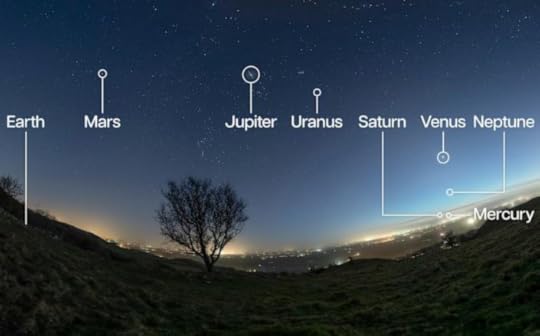Planets everywhere!
Had you heard about this?

All the planets in the sky at the same time — I didn’t know this was rare, but apparently it’s rare. But this is apparently happening now, so if you have binoculars, you might be able to see all the planets.
Stargazers will need no equipment to see Mercury, Mars, Venus, Jupiter, and Saturn, but binoculars or a telescope are necessary for Uranus and Neptune. Planets can be told apart from stars because they shine steadily, rather than twinkling.
Saturn will be the lowest planet on the Western horizon and the hardest to spot with the naked eye.
It sets shortly after the Sun, and there will only be a few minutes while the planet is above the horizon and the sky dark enough to see.
Mercury should be visible just above Saturn, and higher still will be Venus, which is the brightest in the sky.
Jupiter will be in the east just above Rigel, the brightest star in the constellation of Orion. To the east of Jupiter, Mars will be visible.
Neptune and Uranus both appear between Jupiter and Venus, and resemble non-twinkling blue orbs. Experts recommend using an app to find them.
Please Feel Free to Share:






The post Planets everywhere! appeared first on Rachel Neumeier.



